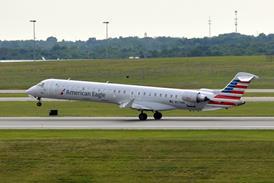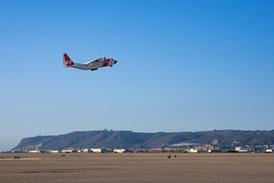The diesel version of the Diamond Aircraft DA-40 180 Diamond Star made its first flight last week as interest in diesel-powered aircraft in Europe is growing amid rising aviation gasoline (avgas) prices and environmental concerns.
The DA-40 TDI, powered by the Thielert TAE 135PS turbo diesel injection-engine instead of the Textron Lycoming IO-360, flew from the company's facilities at Wiener Neustadt, 50km (31 miles) south of Vienna, after completing six months of modifications to accommodate the new engine.
The Austrian light aircraft manufacturer is the first company to successfully integrate the Thielert engine. Engine certification is due in January, with aircraft certification set for October 2002. Christian Dries, Diamond's director general, says that the manufacturer has re-engined its aircraft in response to customer demand.
Frank Thielert, chief executive of Thielert, says that the 100kW (135hp) TAE 135 can run on any mix of jet fuel and diesel. Although the engine has been submitted for US Federal Aviation Administration certification, Thielert is initially only marketing the TAE 135 in Europe, where avgas scarcity is driving up prices and flying clubs fear that the European Commission will outlaw leaded fuel. The average cost of pump diesel in Europe is €0.82/litre (72¢), compared with around 39¢/litre in the USA. Similarly, jet fuel is €1.40/litre ($1.24) in Europe and 69¢/litre in the USA.
The maximum take off weight of the DA-40 TDI has remained at 1,650kg (3,630lb) as the engine, modified from a Mercedes Benz automotive type, is 10kg lighter than the 135kW IO-360, but the 150litres (40USgal) load of fuel is 10kg heavier than avgas.
The aircraft has a higher ceiling than the avgas version at 18,000ft (5,500nm) compared with 15,000ft. With a top speed of 137kt (253km/h), the fuel rate of the diesel version is 32litres/h. When travelling at 100kt, at 40% of peak performance, fuel usage is 9litres/h. Diamond claims that this represents a saving of 80% when combined with cheaper fuel prices.
Modifications include moving the propeller 50mm (2in) forward to accommodate the enlarged cowling. Fuel filler intakes will be redesigned to avoid unintentional avgas refuelling. Diamond is working on a twin-engined variant.
Source: Flight International























